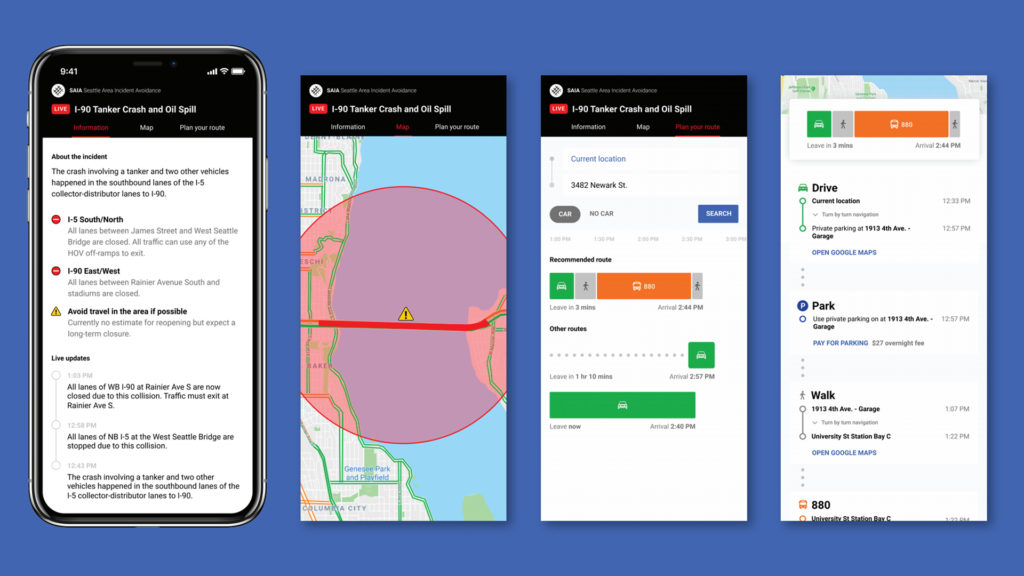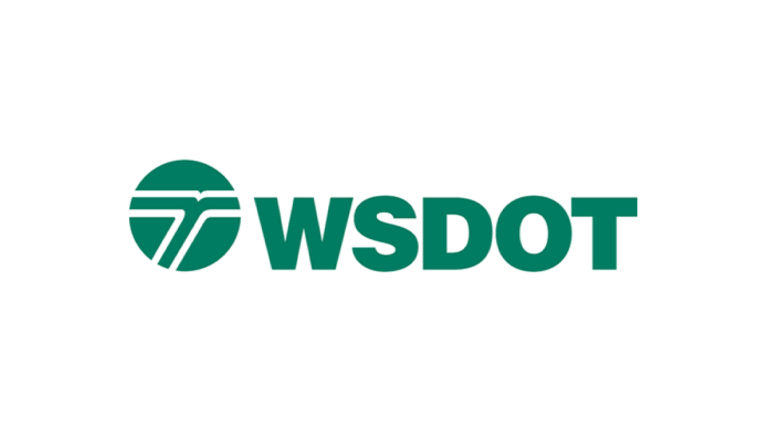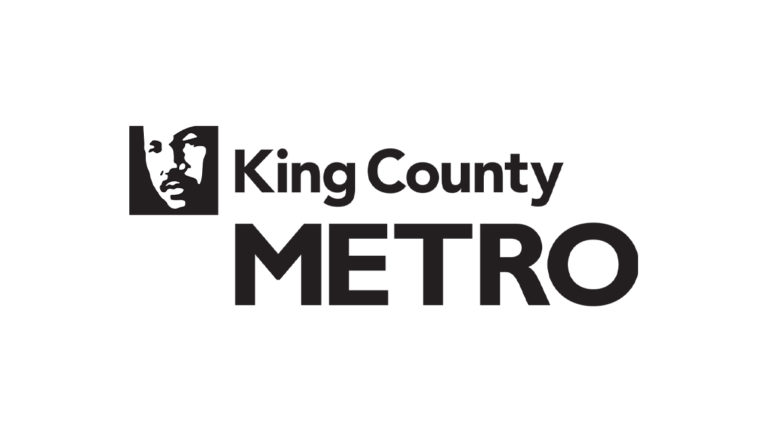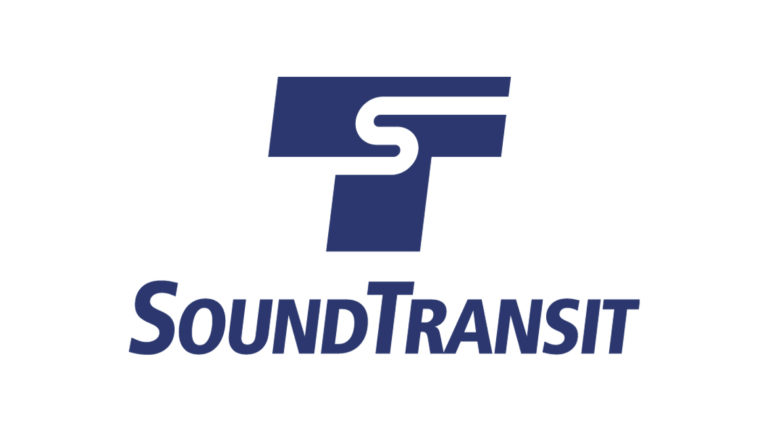
Issue
The current traffic incident alerting options do not provide consistent, timely, on-demand information or actionable recommendations for routing drivers away from the source of congestion. The focus of this project was to find a way to better notify the general public of extraordinary incidents (three or four times per year) that would greatly impact their travel in the Puget Sound area. There was a secondary focus on how this notification system could be integrated with daily utility through improved mobile ticketing features that could help to move displaced drivers onto transit.
Spark
WSDOT Traffic Twitter, Feb 27, 2017: Heads up #Seattle drivers. Rollover collision is blocking all lanes of the SB I-5 c/d just south of I-90. SB I-5 mainline is still open. UPDATE: All lanes of NB I-5 at the West Seattle Bridge are stopped due to this collision. Use alt routes!
Overview
An interdisciplinary student team was asked to address two critical questions:
- How can we provide timely congestion information and routing recommendations to all road users to better inform their transportation choices when major incidents occur?
- How can we support roadway users (including drivers) who may need to shift transportation modes during unanticipated major congestion scenarios?
Innovation
This project proposes a solution for public communication about major traffic events and routing recommendations based on the assumption that incident information and GTFS formatted data would be provided by the Virtual Coordination Center (VCC). The proposed solution addresses many factors that could help to inform drivers including opt-in notifications, “near me” parking options, transit ticket availability via mobile, and marketing campaign recommendations to attract users to the service.
Materials
- Read the report
- View the presentation
- View the project poster
Impact
WSDOT has taken these recommendations to a multi-agency workgroup that is focused on communicating transportation options to the public in the wake of a major incident. Much of what students developed for WSDOT depends upon successful buildout of the Virtual Coordination Center (VCC). In that context, the students have provided a model of something that could be successful and incorporated by WSDOT.
Media Coverage
December, 2019 | UW College of Engineering | Project: Seattle Area Incident Avoidance
Inaugural industry sponsored capstone gives students hands-on experience
Team
This Interdisciplinary Industry Capstone team was led by Prof. Don Mackenzie in the Civil Engineering department and involved students from the Department of Civil and Environmental Engineering (CEE), Paul G. Allen School of Computer Science & Engineering (CSE), Human Centered Design Engineering (HCDE) and the Communications department (Arts & Sciences). This project received mentorship from King County Metro and the Washington State Department of Transportation (WSDOT).
Academic Department
Faculty Leadership
Contributors
- Dr. Andisheh Ranjbari, PhD
- Pari Gabriel
- Yuki Asakura
- Chris Angkico
- Steven Tuttle
- Catherine Wang
- Anny Kong



